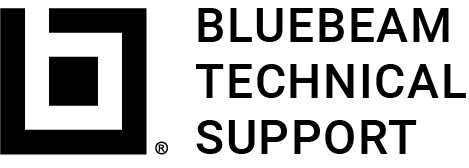Applies to:
- All versions of Revu
What to do when converting PDFs to TIF or other raster (JPEG, BMP, etc.) formats takes a long time with line-merged PDFs.
The term “rasterization” describes the process of converting vector data (the way that line drawing information is typically represented in a PDF) to bit-mapped data (such as a TIF, BMP, or GIF file). Rasterizing PDFs can take a long time, especially with PDFs that have a high dots per inch (DPI) count and/or transparency effects enabled.
Rasterization is common in the architectural and engineering disciplines, where PDFs have line merge enabled for printing purposes. Starting with Pushbutton PDF version 2.2.8, Bluebeam added the ability to create line-merged PDFs. Displaying line-merged PDFs results in overlapping entities, blending colors together to form new colors based on the particular blend mode in use. For example, when line merge is enabled, the color at the intersection point where a blue and yellow line overlap is displayed as a combination of the two colors, resulting in a new color.
Rasterizing a line-merged PDF can be an intensive process because the color value of each pixel has to be computed. As the DPI goes up, the performance problems intensify. Take for instance, an ARCH_D PDF (36″ x 22″) at 400 DPI. That equates to 36 × 22 × 400 × 400 = 126,720,000 pixels. When line merge is enabled, each of those pixels might be blended with pixels of different layers.
The PDF specification supports a transparent imaging model, which allows for line merge. However, printers do not support transparency. When printing PDFs with line merge, they must first be flattened to simulate transparency. For example, a common flattening process is to convert the PDF to an image.
Reprographers often do this as a step in the printing process, using Ghostscript to do the conversion from PDFs to TIF. Older versions of Ghostscript (such as 8.14) ignore line merge information in the PDF, thereby processing the PDF much faster but without blending into account. Newer versions of Ghostscript (8.5.0 and later) process the line merge information correctly, but the process takes much longer.
Suggestions for improving performance
- Line merge should only be used when needed. When printing PDFs in black and white, it is often difficult to see visual differences between line-merged and non-line-merged prints.
- Architects can often eliminate the need for line merge by reordering the layers in the AutoCAD drawing. Order the layers of the drawing such that the screen or underlying color is on a lower layer and interior elements are on the top layers.
- Reprographers using Repro Desk Software can easily have side-by-side installations of Ghostscript. Ghostscript version 8.14 is the last version that does not process line merge. Version 8.14 can be used as a fallback for print jobs that would take too long using a newer version. Note that the TIF will not be line-merged if version 8.14 of Ghostscript is used.
Troubleshooting
Revu 2017 & Below
Revu 2018
Revu 2019
Revu for Mac 1
Revu for Mac 2
Performance
What to do when converting PDFs to TIF or other raster (JPEG, BMP, etc.) formats takes a long time with line-merged PDFs.
